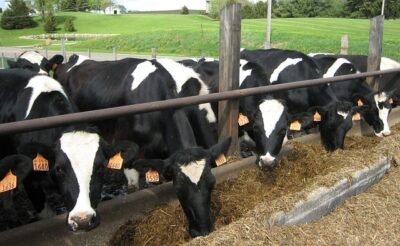Raising Sheep
In this Article...
A Beginner's Guide to Being a Successful Shepherd
Are you considering the joys and responsibilities of owning sheep in the UK? Look no further! In this comprehensive guide, we’ll delve into the world of sheep ownership, covering everything from the reasons why people choose to keep sheep, different breeds to consider, housing and maintenance, specific costs involved, essential tips for success, valuable health advice, and raising healthy and happy lambs. Let’s embark on this exciting journey together and discover the wonders of nurturing your own flock!
Why Keep Sheep?
Sheep ownership in the UK offers a range of benefits, from sustainable land management to wool production and self-sufficiency in meat. By grazing on pasture, sheep contribute to maintaining healthy landscapes, controlling vegetation growth, and promoting biodiversity. Additionally, they provide a valuable source of wool, enabling you to engage in the rewarding craft of shearing. Whether you’re interested in sustainable land practices, fibre production, or homegrown meat, owning sheep allows you to connect with nature, embrace self-sufficiency, and enjoy the fruits of your labour.
Different Sheep Breeds
Suffolk: Suffolk sheep are well-known for their excellent meat production. They have a muscular build, fast growth rate, and high-quality carcass. Their black faces and legs make them easily recognizable. Suffolks are popular among commercial farmers due to their superior meat yield.
Texel: Texel sheep are versatile and valued for both their meat and high-quality wool. Originating from the Netherlands, they have a distinctive muscular appearance and a white fleece. Texels are known for their meaty carcasses, which have a fine-textured and flavorful meat.
North Ronaldsay: Native to the Orkney Islands in Scotland, North Ronaldsay sheep are a unique breed. They are known for their ability to graze on seaweed, making them well-suited for coastal areas. Their wool has a coarse texture and comes in shades of brown and grey. North Ronaldsay sheep play a significant role in conservation grazing and sustainable land management.
Shetland: Shetland sheep are a small, hardy breed that originated from the Shetland Isles. They are renowned for their fine wool, which comes in a wide range of natural colours. Shetlands are adaptable and can thrive in challenging environments, making them suitable for smallholdings or conservation grazing.
Jacob: Jacob sheep are easily recognizable due to their distinctive piebald or “spotted” fleece, with white wool and black patches. They are an ancient breed with a rich history. Jacobs are prized for their flavorful meat, wool, and their ability to thrive in various landscapes.
Clun Forest: Clun Forest sheep are medium-sized and known for their excellent mothering abilities. They have a dense fleece, providing good wool production. Clun Forests are well-suited for grazing on upland pastures and are popular among farmers looking for a versatile breed.
Bluefaced Leicester: The Bluefaced Leicester is a longwool breed known for its lustrous and silky fleece. This breed is highly valued for crossbreeding, especially with hill breeds, to produce offspring with superior meat and wool qualities. Bluefaced Leicester rams are often used in commercial flocks as terminal sires.
Hampshire: Hampshire sheep are large and muscular with a black face and legs. They are primarily bred for meat production and are known for their lean, well-marbled meat. Hampshire sheep are adaptable and perform well in a range of environments.
Remember, this is just a small selection of the many sheep breeds available in the UK. Each breed has its unique characteristics, and selecting the right breed depends on your specific goals, land conditions, and personal preferences. Whether you’re interested in meat production, wool, or simply want to preserve rare breeds, there is a breed that will suit your needs and contribute to a thriving and diverse sheep farming community in the UK.
Housing and Maintenance
Traditional Buildings: Traditional buildings, such as barns or livestock sheds, provide excellent protection against the elements. They offer a secure and comfortable environment for sheep, shielding them from rain, wind, and extreme temperatures. Traditional buildings often have solid walls and a roof, which helps to regulate temperature and reduce drafts.
Field Shelters: Field shelters are open-sided structures that provide a basic level of protection for sheep. They are commonly used in grazing systems, allowing the sheep to access shelter while still having access to grazing areas. Field shelters are typically built with a roof and three walls, providing partial protection from wind and rain.
Lambing Sheds: During the lambing season, dedicated lambing sheds provide a controlled and safe environment for ewes and newborn lambs. These sheds are designed with individual lambing pens or stalls, allowing for close monitoring and assistance during lambing. They provide protection from the elements and allow for better management of newborn lambs.
Mobile or Portable Shelters: Mobile or portable shelters are increasingly popular, especially for smallholders or those practising rotational grazing. These structures can be moved easily to different grazing areas, allowing the flock to access fresh pasture while still having access to shelter. Portable shelters can be simple hoop structures covered with waterproof materials.
Fences and Windbreaks: In some cases, especially on extensive grazing systems, sheep may not have access to dedicated buildings or shelters. In such situations, well-constructed fences and windbreaks can provide some protection against wind, rain, and adverse weather. These barriers can be created using natural materials, such as hedges or trees, or with man-made structures like wooden panels or windbreak fabric.
When designing or selecting a housing option for your sheep, consider the following factors: size of the flock, climate and weather patterns in your region, available space and resources, and the specific needs of the sheep breed. It’s important to ensure adequate ventilation, proper drainage, and sufficient space for the flock to move comfortably. Clean and dry bedding should be provided, and the housing structures should be regularly inspected for any potential hazards or repairs needed.
Specific Costs Involved
Initial Investment: The initial costs include purchasing sheep, which can range in price depending on the breed and quality. Additionally, you may need to invest in equipment such as fencing, water troughs, and handling facilities.
Feed and Forage: Sheep require a balanced diet to meet their nutritional needs. The cost of feed depends on factors like the type of feed (grains, hay, silage) and whether you produce your own forage or purchase it. Seasonal fluctuations in forage availability may impact costs.
Veterinary Care: Budget for regular veterinary care, including deworming, and routine health checks. Additionally, unexpected veterinary expenses may arise for treating injuries or illnesses.
Housing and Infrastructure: Building or maintaining suitable housing and infrastructure for your flock is essential. Costs may include constructing or repairing shelters, fencing, and water systems.
Breeding Expenses: If you plan to breed your sheep, consider costs associated with ram purchases, breeding fees, ultrasound scans, and potential artificial insemination expenses.
Shearing and Wool Management: Shearing your sheep annually is important for their welfare and wool production. Consider the cost of hiring a shearer or investing in shearing equipment. Additionally, if you plan to process and sell the wool, account for processing and marketing costs.
Marketing and Sales: If you intend to sell sheep or their products, budget for marketing expenses such as advertising, website development, and attendance at livestock markets or shows.
Miscellaneous Expenses: Other costs may include bedding materials, mineral supplements, transportation, insurance, and regulatory fees.
Top Tips for Success
Educate Yourself: Familiarise yourself with sheep husbandry, breed-specific requirements, and best practices. Attend workshops, seminars, and join local farming organisations to learn from experienced shepherds.
Networking: Connect with fellow sheep enthusiasts, join local sheep societies, and participate in agricultural events. Networking provides opportunities to share knowledge, seek advice, and build a support system.
Develop a Management Plan: Create a comprehensive management plan for your flock, including breeding schedules, grazing rotations, health protocols, and records of treatments.
Specific Health Tips
Parasite Control: Develop a robust parasite control program to manage internal and external parasites. Regular deworming is essential to prevent issues such as gastrointestinal worms. Rotate deworming treatments and avoid overuse of specific anthelmintics to prevent resistance. Regularly inspect your flock for signs of external parasites, such as ticks and lice, and take appropriate measures for control.
Nutrition and Grazing Management: Provide a balanced diet to meet the nutritional needs of your sheep. Ensure access to clean, fresh water at all times. Monitor grazing areas to prevent overgrazing and manage parasite burdens. Consider supplementing with minerals and vitamins as necessary.
Hoof Care: Regularly inspect and trim the hooves of your sheep to prevent issues like foot rot and hoof abscesses. Maintain clean and well-drained paddocks to minimise the risk of hoof-related diseases.
Monitoring and Observation: Keep a close eye on your flock and monitor their behaviour, appetite, and general well-being. Regularly check for signs of illness, lameness, or abnormal behaviour. Early detection and intervention can help prevent the spread of diseases and ensure timely treatment.
Flock Records: Maintain accurate records of treatments, breeding, and health history for each individual sheep. This information is valuable for monitoring flock health, identifying trends, and providing necessary information to veterinarians.
Raising Lambs
Raising lambs in the UK can be a rewarding experience, whether you’re breeding them for meat production or expanding your flock. Here are some key points to consider when raising lambs:
Colostrum: Lambs should receive colostrum, the first milk produced by the ewe, within the first few hours of birth. Colostrum is rich in antibodies and essential nutrients, providing vital immune support and jump-starting the lamb’s digestive system.
Bottle Feeding: In some cases, lambs may need to be bottle-fed if they are orphaned or if the ewe is unable to produce enough milk. It’s crucial to provide proper nutrition through appropriate lamb milk replacers and follow a feeding schedule to ensure their healthy growth and development.
Weaning: Lambs are typically weaned between 8 to 12 weeks of age. Gradual weaning helps minimise stress and allows for a smooth transition to solid food. Introduce creep feed, a special feed accessible only to lambs, before weaning to encourage them to explore and adapt to solid feed.
Nutrition: Provide a balanced diet that meets the nutritional needs of growing lambs. Feed high-quality forage, such as pasture or hay, and supplement with concentrate feeds specifically formulated for lambs. Monitor their body condition and adjust the feed accordingly.
Pasture Management: Ensure lambs have access to clean and well-maintained pasture areas. Rotate grazing to prevent overgrazing and minimise the risk of parasitic infestation.
Socialisation: Encourage social interaction among lambs to promote their natural behaviour and development. Allow them access to pasture, shelter, and engaging environments that encourage exercise and exploration.
Owning sheep in the UK offers a multitude of rewards, from sustainable land management to wool production and self-sufficiency in meat. By choosing the right breed, providing appropriate housing, implementing proper healthcare practices, and mastering the art of raising lambs, you’ll experience the joys and fulfilment of being a shepherd. Remember to continuously learn, seek guidance from experienced shepherds, and embrace the journey of nurturing your flock. So, take the leap into sheep ownership, immerse yourself in the knowledge shared by seasoned shepherds, and join the vibrant community of sheep enthusiasts across the UK. Together, let’s create a thriving and happy flock!



